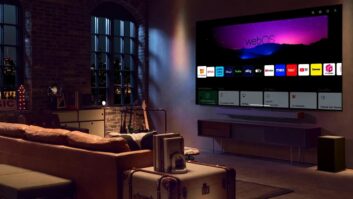The latest pronouncement by Federal Communications Commission chairman William Kennard on the painfully slow overall spread of digital TV (DTV) to consumers indicates he is at least a megahertz short of a full broadcast channel.
His comments came in a speech delivered in October, and they demonstrate an apparent failure to grasp the dynamics of the marketplace. I guess we have to cut him some slack on this. While Kennard didn’t invent DTV, anymore than Al Gore invented the Internet, like Gore he has hitched his political star to a new technology.
Kennard very much wants to go down in the FCC history books as the chairman who brought DTV, and along with it HDTV, to the American public. But he is facing the probability of falling well short of that objective.
The agency’s former general counsel, Kennard was named chairman in 1997, and his term expires in June. Regardless of who is sworn in as president, it is highly unlikely Kennard will be reappointed FCC chairman this year, and it is possible that he won’t even be reappointed to the FCC at all. So it’s no surprise that he is prepared to champion unrealistic draconian measures in hopes of spurring DTV along.
In his October presentation, Kennard said he plans to propose a DTV legislative hat trick to the new Congress. Two parts hit on broadcasters: One calls for reconsidering what he calls “the 85 percent loophole” that lets broadcasters operate both their analog and digital channels past the official 2006 cutoff date until 85 percent of TV homes in their area are equipped for digital reception. The other would impose a fee on broadcasters that operate an analog channel after Jan. 1, 2006.
The third proposal, a crusher for TV set makers, could require that all new TVs be fully capable of receiving DTV signals “by a given date-say Jan. 1, 2003.”
The impacted industries came up with wonderfully predictable knee-jerk reactions.
Speaking for the Consumer Electronics Association, president Gary Shapiro issued a statement applauding Kennard “for his continued leadership on DTV” and voicing support for “his efforts to hold the broadcast community accountable” for delivering DTV to consumers. But at the same time, Shapiro said let’s not forget that part about TV sets.
Including DTV in all TVs, he argued, would boost the average price of a 13-inch set from today’s $125 to more than $1,000. Also, it would make it impossible for consumers to phase in to DTV by buying a monitor now and a set-top tuner later, and it would restrict their upgrade options.
Coming from the other side, Edward Fritts, president of the National Association of Broadcasters, said Kennard “failed the test of leadership” by shifting “the blame for a faltering DTV transition” onto the broadcast industry.
While cheering the idea of requiring DTV capability in all TVs, Fritts said the FCC should also focus on mandating DTV signal carriage by cable systems and setting “DTV/cable interoperability rules.”
Not discussed in the statements by either of the protagonist associations were Kennard’s comments on alternative uses of DTV. In his speech, which was primarily on how digital broadcasting can best serve the public interest, he called for using multicasting to “provide more age-appropriate programming for children” and to give parents more information so they can better use the V-chip.
Now I know from my days covering broadcasters that they have tried for at least the past 30 years to come up with more programming that kids will actually watch. This is not easy, and most of the shows they come up with are designed to appeal mainly to the adults who make up the children’s TV lobby. At the same time, broadcasters are under pressure not to siphon the young audience away from PBS.
Kennard should know and understand this. Just as he should know and understand that you can’t shove DTV down consumers’ throats in the form of $1,000 13-inch TVs, or even $1,000 27-inch or 32-inch TVs.
Nor can the involved industries be expected to resolve all the problems of an analog-to-digital transition in time for an artificial 2006 deadline. The closest thing to that transition happened in England. The BBC started regular TV broadcasts in the mid-1930s. The British knew war was coming and wanted radio makers to gear up for TV so the country would have an industry making the picture tubes that would be needed for radar. The standard was for a black & white system of about 225 lines.
On January 1, 2006, there will still be more than 300 million analog color TVs in U.S. homes, and I’m willing to bet more than a third of them will be less than six years old. Can you just see the industry trying to meet a demand for 100 million-plus DTV converter boxes?
It’s time for the FCC, Congress and any other regulators to just let DTV evolve at its own pace. As set penetration gradually increases, more broadcasters go on the air, and digital feeds from cable and satellite grow in number, so too will DTV households.
It will probably take 10 years, maybe as long as 15, but it will come, and then broadcasters will have to turn in their analog channels and free spectrum space for other uses. But that transition, like all others, will have to be orderly and can’t be rushed just to meet a political need.
Bob Gerson, TWICE editor-at-large, has covered the CE industry for more than 30 years. He is the founding editor of the publication and its longtime editor-in-chief. In recognition of his work, Gerson was presented with one of the first Consumer Electronics Association Lifetime Achievement Awards at CES last year.













